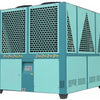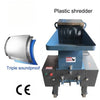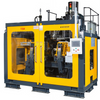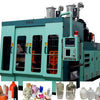Plastic Crushers: Technological Analysis, Applications, and Role in the Circular Economy Abstract
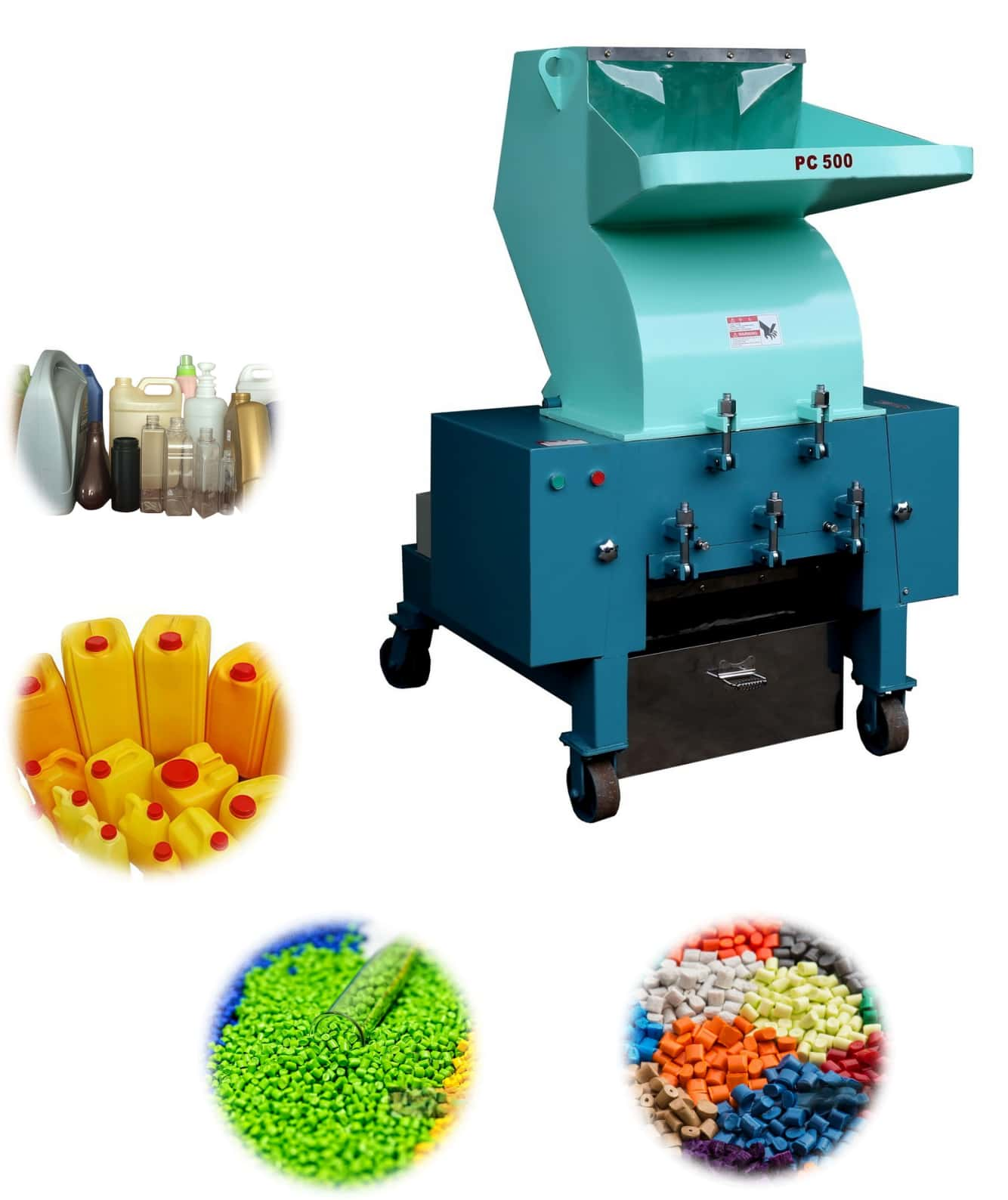
1. Introduction The proliferation of plastic materials in modern society has created an urgent need for effective end-of-life management. Plastic crushers serve as the primary machinery for size reduction, transforming bulky plastic waste, production off-cuts, and post-consumer items into manageable granules or flakes. This process is the crucial first step in both mechanical recycling, where materials are reprocessed into new products, and in preparing materials for further processing like extrusion or再造粒 (re-pelletizing). Understanding the technology and capabilities of plastic crushers is therefore essential for optimizing recycling workflows and promoting sustainable practices.
2. Operating Principle and Core Components The fundamental operating principle of most plastic crushers involves the mechanical shearing and cutting of material between rotating and stationary blades.
- Drive System: An electric motor provides the primary动力 (power) to drive the rotor.
- Rotor and Blades (Knives): The heart of the machine is a high-speed rotor equipped with动刀 (rotating knives/movable blades). These knives pass closely by定刀 (stationary knives/fixed blades) mounted on the machine's housing, creating a剪切 (shearing) action that fractures the plastic.
- Cutting Chamber: The material is fed into a robust chamber where the cutting action takes place. The design of this chamber, including the进料口 (feed hopper) and出料口 (discharge outlet), is critical for safety and efficiency.
- Screen/Mesh: Many models incorporate a筛网 (screen or mesh) beneath the cutting chamber. The size of the perforations in this screen determines the maximum size of the output颗粒 (granules). Material is repeatedly cut until it is small enough to pass through the screen.
- Collection System: The processed material is typically collected in a集料盒 (collection bin or hopper) for further handling.
The efficiency of the crushing process depends on factors such as blade sharpness, rotor speed, the gap between moving and stationary blades, and the screen size.
3. Design Features and Technological Advancements Modern plastic crushers are engineered for performance, durability, and user-friendliness.
- Blade Technology: High-quality, often进口 (imported) alloy steel blades are standard. These blades are designed for optimal cutting geometry, can be repeatedly sharpened, and are mounted in a way that allows for easy replacement or adjustment. Some designs feature热缩处理 (heat-shrunk treatment) for the刀座 (blade holder) to ensure precision and balance.
- Structural Integrity: The main body of industrial crushers is typically constructed from厚壁优质钢 (thick-walled, high-quality steel, e.g., Q235A) to withstand the significant forces generated during operation and ensure long-term durability.
- Automation and Safety: Advanced models incorporate features like遇阻自动运转及报警 (automatic reverse and alarm upon encountering blockages) and电源连锁保护系统 (power interlock safety systems). They can be integrated with吸料机 (vacuum loaders) and旋风分离器 (cyclone separators) for fully automated material handling and回收 (recovery) systems.
- Ergonomics and Maintenance: Design elements focus on ease of use, including可视料窗 (visual feed windows),抽取式 (pull-out) collection bins for快速清料 (quick cleaning), and简便的电机安装方式 (convenient motor mounting) for easier maintenance.不锈钢 (Stainless steel) is often used for contact parts like the feed hopper and collection bin for corrosion resistance and easy cleaning.
- Noise and Energy Reduction: Manufacturers strive to minimize environmental impact through采用中速马达 (using medium-speed motors) and优化设计 (optimized design) to achieve低噪音 (low noise) and低能耗 (low energy consumption).
4. Advantages of Plastic Crushers
- Versatility: They can process a wide range of塑料制品 (plastic products), including pipes, sheets, films, bottles, injection molding runners, and rejected parts. Common materials include PE, PP, PVC, PS, ABS, PC, and even rubber or leather.
- Efficiency: They enable rapid size reduction, preparing material for downstream processes like washing, extrusion, or再造粒 (re-pelletizing).
- Cost-Effectiveness (Operational): By enabling in-house recycling of production waste (水口料, sprues and runners), manufacturers can significantly reduce raw material costs and waste disposal fees.
- Resource Recovery: They are the cornerstone of mechanical recycling, turning waste plastic into a valuable再生资源 (recycled resource).
- Improved Material Handling: Granulated plastic is much easier to store, transport, and feed into subsequent processing equipment compared to bulky waste.
5. Limitations and Challenges
- Initial Investment Cost: High-performance, industrial-grade plastic crushers, especially those with advanced automation and safety features, represent a significant capital expenditure.
- Material Limitations: While versatile, certain materials pose challenges. Extremely hard, abrasive, or highly contaminated plastics can accelerate blade wear or damage the machine. Materials with inconsistent质地 (texture) or high levels of杂质 (impurities) can also lead to uneven粉碎效果 (crushing results) or blockages.
- Noise Generation: Despite mitigation efforts, the high-speed cutting process inherently generates considerable噪音 (noise), requiring appropriate workplace safety measures or soundproofing.
- Maintenance Requirements: Blades require regular inspection, sharpening, and eventual replacement. Bearings and other moving parts also need scheduled maintenance to ensure optimal performance and longevity.
- Dust Generation: The crushing process can produce fine plastic粉尘 (dust), necessitating dust collection systems for operator safety and environmental compliance.
6. Applications Across Industries The utility of plastic crushers spans numerous sectors:
- Plastics Manufacturing: As a周边设备 (peripheral equipment) for注塑机 (injection molding machines) and挤出机 (extruders), they recycle production scrap in real-time, enabling immediate reuse.
- Recycling Industry: They are the primary size-reduction tool in recycling facilities, processing post-consumer and post-industrial plastic waste for再造粒 (re-pelletizing) or direct reuse.
- Chemical and Petrochemical Industry: Used in facilities producing polymers like聚乙烯 (polyethylene, PE) and聚丙烯 (polypropylene, PP) to manage off-spec material or startup/shutdown waste.
- Specialized Material Production: Used in the production of materials like不饱和聚酯树脂 (unsaturated polyester resin),硅酮胶 (silicone sealant), and美缝剂 (grout) to handle specific plastic components or packaging.
7. Role in Sustainability and the Circular Economy Plastic crushers are not merely processing machines; they are enablers of sustainability. By facilitating the回收 (recovery) and再利用 (reuse) of plastic materials, they directly contribute to:
- Resource Conservation: Reducing the demand for virgin fossil fuel-derived plastic resins.
- Waste Reduction: Diverting plastic from landfills and the natural environment.
- Energy Savings: Recycling plastic typically consumes less energy than producing new plastic from raw materials.
- Closed-Loop Systems: Supporting the development of circular business models where waste from one process becomes the feedstock for another.
Innovations in粉碎技术 (crushing technology), such as those developed by companies like Herbold Meckesheim for handling高度污染材料 (highly contaminated materials), are crucial for improving the efficiency and scope of plastic recycling, thereby strengthening the circular economy.
8. Conclusion Plastic crushers are indispensable workhorses in the modern materials economy. Their robust design, evolving technology, and broad applicability make them vital for efficient manufacturing and, more importantly, for the critical task of plastic waste management. While challenges related to cost, noise, and material compatibility persist, ongoing advancements in blade technology, automation, and energy efficiency continue to enhance their performance. As global pressures for sustainability intensify, the role of the plastic crusher in enabling resource recovery and closing the loop on plastic waste will only become more significant. Future development should focus on further improving durability for abrasive materials, reducing operational noise, and integrating seamlessly with smart, automated recycling systems to maximize their contribution to a circular future.
-
Posted in
Plastic crusher


